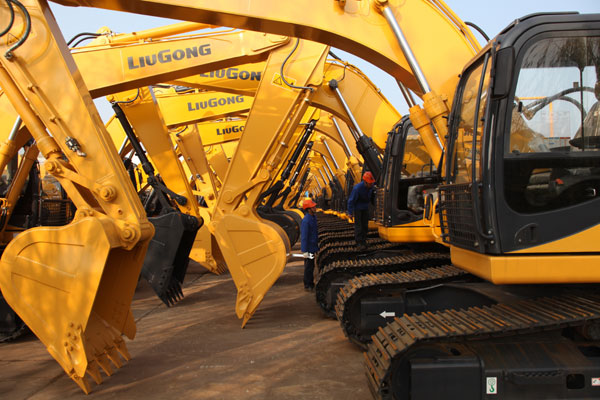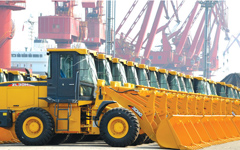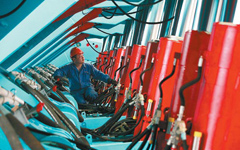|
 |
|
LiuGong predicts its construction machinery business will grow in 2014, despite fierce competition at home and abroad. Huo Yan / China Daily |
Picking up foreign expertise while undertaking mergers and acquisitions are the way forward for China's pre-eminent construction machinery company, reports Li Yang in Liuzhou, Guangxi
Although few companies include their embarrassing experiences in their yearbook, LiuGong Machinery Co Ltd is happy to do so.
It took a half-century for the firm to develop from a city workshop in Guangxi to become one of the world's top 20 construction machinery makers.
And there were missteps along the way.
In 1998, an Australian customer bought a loader from LiuGong. Because the loader was equipped with an imported automatic gearbox, the mismatch between it and the supporting system caused many malfunctions. The angry customer set the loader on fire.
|
 |
|
 |
In 1999, LiuGong discovered one of its Italian clients had repainted its products once the machines arrived in Italy because the customer said, "the ugly design cannot be changed, and the rusty look is intolerable".
In fact, fundamental changes in LiuGong's business did not come about until 2002, when it started seeking a bigger role in markets abroad, using its 18,000 employees and total assets of 30.7 billion yuan ($5 billion).
According to its development strategy, international business should account for 25 percent of its total revenues by 2015.
LiuGong has more than 400 dealers, seven accessory centers and two production factories across 130 countries and regions today. By 2012, LiuGong's $580 million market outside China already accounted for nearly 30 percent of its total sales revenue, an increase of more than 28.4 percent year-on-year. LiuGong is indisputably a leading exporter of loaders and diggers in China now.
"We must squarely face up to the fact that foreign enterprises coming to China is inevitable. If we dare not dance with the 'wolves' now, we have no chance of winning future competition at home and abroad," said Wang Xiaohua, board chairman of LiuGong.
"LiuGong was liberalized by China's opening-up and reform, and its internationalization evolved from the country's recent rise. LiuGong will have a brighter future as China turns from a big power to a strong power," LiuGong president Zeng Anguang said confidently.
Technology innovation and marketing networks are two priorities for Zeng, going by LiuGong's experience.
The workshop from which LiuGong originated was built in Liuzou city in the Guangxi Zhuang autonomous region in 1958 by workers from an iron and steel factory in Shanghai and a metal structure plant in Xi'an. They were sent by the government to develop Southwest China.
The old generation of Shanghai and Xi'an workers brought their master skills and professionalism to Liuzhou and revived the industrial tradition of the city, a regional center famous for sugar production and machinery industries from the late Qing Dynasty (1644-1911) to the early 1940s. The War of Resistance Against Japanese Aggression (1937-1945) and China's civil war from 1946 to 1949 sent the city's industrial development off-rail, but only temporarily.
The 1980s witnessed LiuGong's initial contact with foreign countries.
